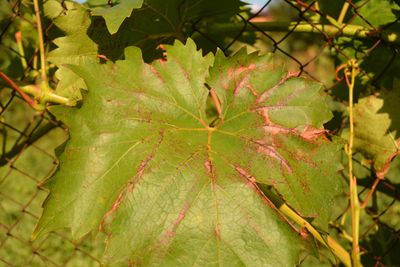Grape Anthracnose Info
Spotty grapes? This could be caused by anthracnose on grapevines. The problem also affects the shoots and leaves and may result in reduced vigor in vines, affecting production and appearance. Many commercial crops and ornamental plants develop this fungal disease, especially in wet, warm periods. As with any fungal disease, the condition is contagious and spreads readily in vineyard situations. The signs of brown lesions on leaves and stems may be the first symptoms of anthracnose on grapevines. The disease resembles the damage from hail, creating necrotic, irregular spots with darkened haloes. Infected sites crack and cause vines to be brittle. Over time, the spots gather together into larger lesions that are sunken and may have reddish brown, raised edges. These raised edges distinguish the fungus from hail injury and may occur on any side of the stems and leaves. In fruit, the centers are light gray surrounded by thick, dark margins, giving the name bird’s eye rot to the disease. You can still eat the grapes but affected fruit may crack and mouth feel and taste are depleted. Grapes with anthracnose are suffering from the fungus Elsinoe ampelina. It overwinters in plant debris and soil, and comes to life when conditions are wet and temperatures are above 36 degrees F. (2 C.). The spores spread through splashing rain and wind, which makes it easy to contaminate an entire vineyard quickly if not controlled. At higher temperatures, the infection progresses rapidly and symptoms can be seen 13 days after exposure. According to grape anthracnose info, fruiting bodies form on the lesions and cause a second source of introduction. These fruiting bodies make it possible for the disease to continue to spread throughout the growing season.
Grape Anthracnose Treatment
Start with disease free vines from reputable suppliers that are resistant to the fungus. Avoid the French hybrids, which are susceptible to the disease and Vinus vinifera. In established vineyards, sanitation proves to be an important control. Clean up old plant debris and destroy infected material. Prune out infected vines and remove diseased fruit. Apply liquid lime sulfur in early spring, just before buds break. The spray kills the initial spores and prevents further development of the disease. If disease has been discovered during the growing season, there are several fungicides recommended but none provide as complete control as the early season liquid lime sulfur application.
